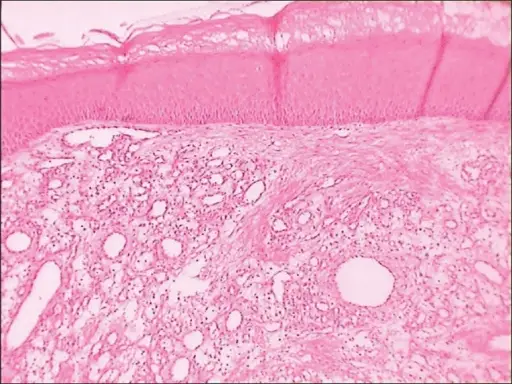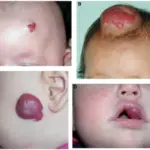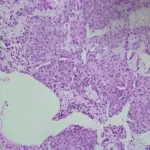Pyogenic granulomas are polypoid type of capillary hemangioma arises as a swiftly growing exophytic red nodule attached by a stalk to the skin, gingival or oral mucosa.
What is the Pathology of Pyogenic Granulomas?
The pathology of pyogenic granulomas is:
-Etiology: The cause of pyogenic granulomas is unknown.
-Genes involved: Unknown.
-Pathogenesis: The sequence of events that lead to pyogenic granulomas is vascular proliferation.
-Morphology: The morphology associated with pyogenic granulomas shows extensive edema, resemblance of exuberant granulation tissue.
-Histology: The histology associated with pyogenic granulomas shows inflammatory infiltrate.
How does Pyogenic Granulomas Present?
Patients with pyogenic granulomas typically more commonly males around 20 years old. The symptoms, features, and clinical findings associated with pyogenic granulomas include painless glistening red papule.
How is Pyogenic Granulomas Diagnosed?
Pyogenic granulomas is diagnosed through imaging studies such as sonography and CT scan.
How is Pyogenic Granulomas Treated?
Pyogenic granulomas are treated through medical therapy which include topical, systemic beta-adrenergic receptor antagonists. Surgical excision may also be considered.
What is the Prognosis of Pyogenic Granulomas?
The prognosis of pyogenic granulomas is fair.



